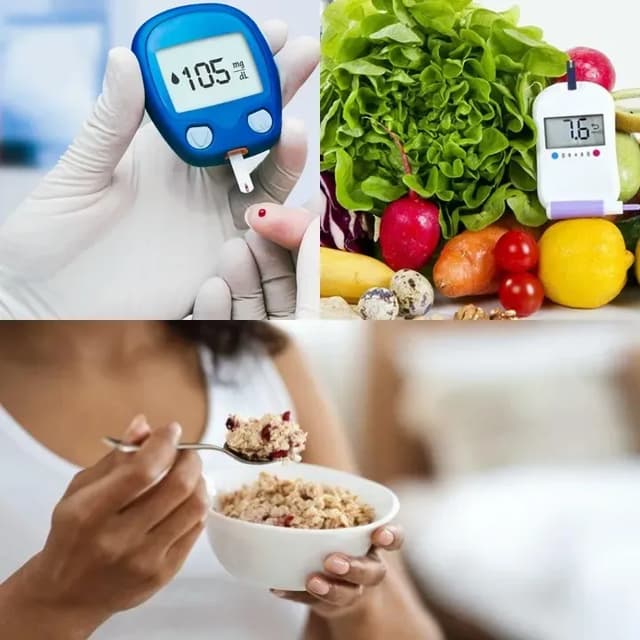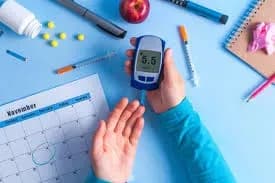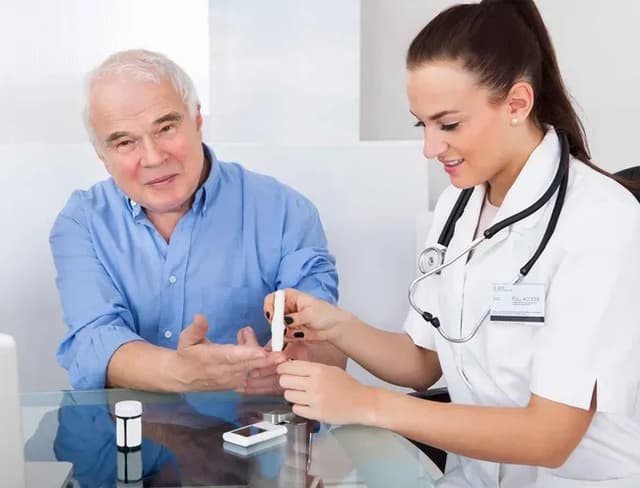How to recognize early signs of diabetes
By Van Vu
02/11/2024
Diabetes mellitus, commonly known as diabetes, is a metabolic disorder in which the body cannot tolerate glucose, leading to higher than normal blood sugar levels.

1. What is diabetes?
Diabetes mellitus (also known as diabetes) is a heterogeneous metabolic disorder characterized by increased blood sugar levels in the body. The cause is often due to unstable insulin levels in the body (can be deficient or even excessive). If you have diabetes and control your blood sugar levels and regularly monitor them well, your blood sugar levels will definitely be within a safe range, almost like a normal person.
Based on the characteristics and progression of the disease, diabetes is divided into types: type 1 diabetes, type 2 diabetes, secondary diabetes and gestational diabetes.
2. Warning signs of diabetes
Most of the early symptoms of the disease diabetes is a higher than normal level of glucose in the blood. The warning signs of diabetes can range from very mild to no symptoms at all. Some people do not realize they have severe disease or complications until they find out.
2.1. Symptoms of type 1 diabetes
The disease progresses very quickly, symptoms often occur quickly within a few days or weeks. Often there is a typical 4-multiple syndrome.
- Hungry and tired: Your body converts the food you eat into glucose that your cells use for energy. But your cells need insulin to absorb glucose. If your body doesn’t make enough or any insulin, or if your cells are resistant to the insulin your body makes, glucose can’t get into them and you don’t have energy. This can make you hungrier and more tired than usual.
- Urinating more often and being more thirsty: The average person urinates four to seven times in 24 hours, but people with diabetes who have high blood sugar may go much more than usual. Why? Normally, your body reabsorbs glucose as it passes through your kidneys. But when diabetes pushes your blood sugar up, your kidneys may not be able to take it all back. This causes your body to make more urine and lose water. The result: You'll have to go more often. You may also go more. Because you're urinating so much, you may be very thirsty. When you drink more, you'll also urinate more.
- Dry mouth, increased thirst and itchy skin: Because your body is using fluid to make urine, there is less moisture available for other things. You may become dehydrated, and your mouth may feel dry. Dry skin may make you itchy.
- Lose a lot of weight: Although the patient eats a lot, he loses a lot of weight.
- Reduced vision: Changes in fluid levels in your body can cause the lenses in your eyes to swell, leading to blurred vision and reduced vision.
2.2. Symptoms of type 2 diabetes
In type 2 diabetes, the patient's progress is very quiet, even without any symptoms, without the loud symptoms like type 1 diabetes. You may be diagnosed with diabetes because you go to the doctor for another disease and accidentally test your blood glucose, or discover the disease because of other complications such as an infected wound that is difficult to heal. In general, the patient may never feel the obvious warning signs. Diabetes can develop over many years and the warning signs can be very difficult to diagnose. Some signs are:
Yeast infection: Both men and women with diabetes can get these. Yeast feeds on glucose, so having plenty around makes it thrive. Infections can develop in any warm, moist folds of skin, including: between the fingers and toes, under the breasts, in or around the genitals
Slow-healing ulcers or cuts: Over time, high blood sugar can affect your blood flow and cause nerve damage that makes it difficult for your body to heal wounds. Pain or numbness in your feet or legs. This is another result of nerve damage.
2.3. Symptoms of gestational diabetes
High blood sugar during pregnancy usually has no symptoms. You may feel a little thirstier than usual or have to urinate more often. It is usually detected during a triple glucose challenge test at 28 weeks of pregnancy.
3. Who is at risk of diabetes? How to treat diabetes
Diabetes can occur in anyone and for both type 1 and type 2 diabetes. You may experience one or more warning signs related to diabetes. If you suspect, go to medical facilities, hospitals to be diagnosed and treated by a doctor.
If you suspect you may have diabetes, you should see a doctor immediately. During the examination, your doctor will ask you about the symptoms you are experiencing, whether anyone in your family has diabetes, the medications you take, and any allergies you have. Based on the information you provide, your doctor will decide to do some tests for you. There are several tests to diagnose diabetes:
- HbA1C This test shows your average blood sugar level over the past 2 or 3 months. This test does not require you to fast or drink anything.
- Fasting plasma glucose (FPG): You will need to fast for at least 8 hours before this test.
- Oral glucose tolerance (OGTT): This test takes 2 to 3 hours. Your blood sugar level is checked initially and then repeatedly at 2-hour intervals after drinking a specific sweet beverage.
- Random plasma glucose test: You can have this test at any time and does not require fasting.
To better understand your condition and how to treat it, you should also ask your doctor questions about your warning signs or the condition itself.
3.1. Treatment of diabetes
Diabetes can be treated in a number of ways. Dietary changes, physical activity, and regular monitoring of your condition are important if you have diabetes, regardless of the type of diabetes you have.
If you have type 1 diabetes, you will need to take insulin for the rest of your life, because your body does not produce insulin on its own. If you have type 2 diabetes, you can control your condition with lifestyle changes, such as diet and exercise. You may also need to take oral or injectable medications, including insulin or metformin, to control your blood sugar levels.
When you have diabetes, you will need to carefully monitor your diet to prevent your blood sugar from getting too high. This usually means watching your carbohydrate intake and limiting processed, low-fiber foods. Your doctor will give you a treatment plan to help you control your blood sugar.
It is very important that if you suspect you have symptoms of diabetes, do not hesitate to see your doctor. Early treatment is more effective in controlling the disease, which is the key to controlling symptoms and preventing more serious health problems.
If you have type 1 diabetes you will need to control your glucose levels by combining insulin with diet and activity. If you have type 2 diabetes you may be able to control your blood glucose levels with diet and activity alone, or with medication as needed.
Diabetes is a progressive disease that may require reassessment and changes to treatment plans over time.
3.2. Ways to prevent diabetes
Diabetes cannot be prevented in all cases. Type 1 diabetes cannot be prevented. You can reduce your chances of developing type 2 diabetes by adjusting your diet and staying active. However, genetics and other risk factors can increase your risk despite your best efforts.
Even if you are diagnosed with diabetes you can live a full life. Diabetes requires careful planning and management, but it should not stop you from participating in and enjoying everyday activities.
How to recognize early signs of diabetes
By Van Vu
02/11/2024
Diabetes mellitus, commonly known as diabetes, is a metabolic disorder in which the body cannot tolerate glucose, leading to higher than normal blood sugar levels.
When traveling in Hanoi Vietnam where to examine and treat diabetes?
By Van Vu
02/11/2024
Diabetes is a disease that requires long-term treatment, with a treatment regimen appropriate to each person's condition. Patients should go to hospitals and clinics with expertise in Diabetes to be tested, diagnosed and properly treated.
Pocket notes when traveling to Vietnam for people with diabetes
By Van Vu
03/11/2024
To have a perfect trip, people with diabetes will need to prepare more carefully than people with normal health. So what are the things that people with diabetes need to ensure for a perfect trip? Here are some notes when traveling to Vietnam for people with diabetes.
Guidelines for diagnosis and treatment of type 2 diabetes for travelers
By Van Vu
03/11/2024
The characteristics of complications of type 2 diabetes are closely related to the process of disease development. Therefore, at the time of clinical detection of the disease, the physician must look for complications of the disease. Regarding the classification of complications, it is possible to divide them into acute and chronic complications. In chronic complications, it is divided into large blood vessel complications and small blood vessel complications.




